

by Joseph Thomas, … with New Eastern Outlook, Moscow
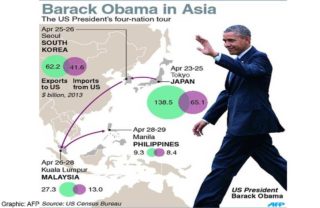
[ Editor’s Note: Joseph Thomas cleverly uses this RAND report to challenge any justifiable motives for US aggression in Asia other than to create and exploit political destabilization, which has the dual bonus of channeling competitive infrastructure spending into needed defense expenditures, which can have a short lifespan on a bad day.
He has a wonderful quote at the end which I will share with you now: “The US promises only instability and confrontation for the next decade, and is even openly preparing for a war it admits will devastate the region. It is a war that will only be fought because the US refuses to withdraw from a region it has no legitimate claim to in the first place.”
Thomas also clearly lays out that a major war would be an economic devastation to the whole region, where China is the powerhouse engine to many of the other economies, ones that do not sit on the foreign reserves that China does. The whole world economy would be hurt, and who would it blame, and what would China do, or wish it could do?
I was always perplexed when Obama tied his major policy shift to end the Iran nuclear threat hoax con that had gone on way past its time. As the fight went down to the wire, even Israel had nothing to put on the table to sustain its endless claims that Iran was always just a few year away from “da bomb”. As he withdrew from one manufactured threat, he just began a new one. What’s up wid dat?
The saddest part of it all is how US civil institutions are just at a complete stand down for our military primarily being used as the muscle to support uni-polar supremacy, the kind where we have seen the vanishing of much mention of the “trickle down” theory. One could be stoned for bringing such a thing up.
The question to ask, as always, is “who benefits” from the creation of all this chaos? The answer is always the insiders. One would think the public institutions would have wised up by now and would be summoning their members for substantial protests to back government off its trade war jihad and the abuse of the American military, but alas they have abandoned the field. They are AWOL… Jim W. Dean ]
____________

– First published … September 05, 2016 –
The RAND Corporation was commissioned to publish a report titled, “War with China: Thinking Through the Unthinkable,” in which it describes its assessment of possible war between the US and China in the Pacific in both 2015 and in 2025. The report’s introduction summarised its findings, stating:
Premeditated war between the United States and China is very unlikely, but the danger that a mishandled crisis could trigger hostilities cannot be ignored. Thus, while neither state wants war, both states’ militaries have plans to fight one. As Chinese anti-access and area-denial (A2AD) capabilities improve, the United States can no longer be so certain that war would follow its plan and lead to decisive victory. This analysis illuminates various paths a war with China could take and their possible consequences.
The report makes an attractive concession to possible Chinese politicians and business leaders (and their counterparts throughout the rest of Asia) who may read the report and be tempted to take it at face value, claiming that war with China, even today, would be costly for the US, and that the window of opportunity for a decisive victory over China will likely be closed come 2025.
However, the report also claims that:
Both sides would suffer large military losses in a severe conflict. In 2015, U.S. losses could be a relatively small fraction of forces committed, but still significant; Chinese losses could be much heavier than U.S. losses and a substantial fraction of forces committed.
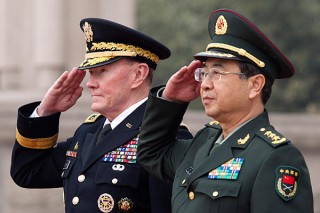
The publicly available paper appears to be an attempt to accomplish two things. First, it attempts to play down the possibility of a premeditated US first-strike on Chinese forces, simply because for a first-strike to be most effective, it would be best done when completely unexpected.
Second, it is an attempt to temper Chinese ambitions in the region driven by increasing Chinese military strength, and may represent an effort to convince some among China’s leadership to take a more conciliatory approach, accommodating a continued US presence and role in the region, rather than fully displacing it.
In other words, it is a veiled threat, attempting to coerce Chinese decision makers to forego what is otherwise the inevitable expulsion of US influence from the region. The report goes on to make recommendations, which include measures intended to prepare for this potential war and to ensure an American edge in it.
These recommendations include:

- The United States should reduce the effect of Chinese A2AD by investing in more-survivable force platforms (e.g., submarines) and in counter-A2AD (e.g., theater missiles).
- The United States should conduct contingency planning with key allies, especially Japan.
- The United States should ensure that the Chinese are specifically aware of the potential for catastrophic results even if a war is not lost militarily.
- The United States should improve its ability to sustain intense military operations.
- U.S. leaders should develop options to deny China access to war-critical commodities and technologies in the event of war.
- The United States should undertake measures to mitigate the interruption of critical products from China.
- Additionally, the U.S. Army should invest in land-based A2AD capabilities, encourage and enable East Asian partners to mount strong defense, improve interoperability with partners (especially Japan), and contribute to the expansion and deepening of Sino-U.S. military-to-military understanding and cooperation to reduce dangers of misperception and miscalculation.
Several of these recommendations would enhance the impact of US first-strike on Chinese forces in the region. And all of these recommendations include a continuous American military build-up in Asia, far beyond America’s own borders and territory, fueling a climate of ever-looming confrontation and the ever-present threat of potential war for the entirety of Asia.
Continued US Military Build-Up Threatens Asian Stability
Because much of the Western Pacific would become a war zone, China’s trade with the region and the rest of the world would decline substantially.
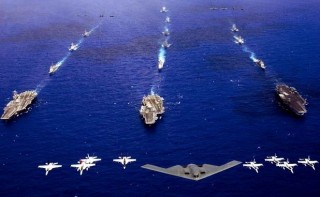
Examining the economic disposition of the Asian region, one finds that Asia trades primarily within itself, first and foremost, and then abroad to the Americas, Europe and elsewhere. In essence, a US war on China would also be a US war on the rest of Asia’s economy.
US economic influence in Asia falls disproportionately short of the geopolitical primacy it attempts to wield in the region.
It is an aspiring global hegemon faced with an entire region growing increasingly independent of the economic and security framework it has attempted to overlay and constrain the region within for nearly a century.
Its Trans-Pacific Partnership free trade agreement represents a modern day form of mercantilism. America’s use of “soft power” through the organisation of disruptive and subversive political groups and terrorist fronts provides a modern-day stand-in for British gunboat diplomacy.
And the parallel institutions the US creates through US State Department-funded nongovernmental organisations (NGOs) mirror the imperial administrative networks constructed by the British, French and Dutch throughout the region before World War II to compete against, and eventually take over local institutions.
Yet despite all these reimagined, modernised hegemonic constructs, Asian states with unified populations, strong economies and increasingly capable military and security agencies seem capable of incrementally displacing America’s unwarranted influence from the region nonetheless.
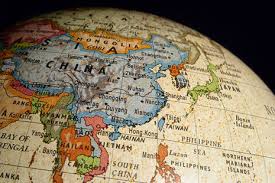
And just like the empires whose institutions the US is attempting to perpetuate in Asia Pacific, the US seeks to divide these nations against themselves and their neighbours to create a weakened region it can reassert itself over.
This is the genesis of the present South China Sea conflict. Of course, real rivalries do exist, not just between China and its Southeast Asian neighbours, but between these Southeast Asian states themselves.
Through the use of soft power and America’s formidable media influence, it has attempted to amplify these manageable bilateral differences into a regional conflict, then place itself amid it, posing as an indispensable underwriter of Asian security and stability. It can then manage the crisis ensuring maximum tension and division across the region, weakening it as a whole and allowing the United States to reassert its primacy.
It is a dangerous game that if played well by Washington will still cost Asia its collective economic potential well into the foreseeable future. However, if played poorly, it could degenerate into the very sort of armed conflict the RAND Corporation paper described, leading the region into unpredictable and open-ended disaster.
Stability in Asia is the Only Option

For Asia, stability equals prosperity and progress. The region is already creating inter-economic incentives that encourage nations to choose peace over confrontation regarding bilateral disagreements and territorial claims.
Simultaneously, each respective nation must continue to build up their military forces to reduce the temptation of resorting to, or inviting, armed coercion. Building up various mechanisms to enhance this balance of power, thus creating a multipolar regional order will be the key to a prosperous Asia well into the future.
The presence of the United States will remain a constant source of instability undermining this process, primarily because its own stated objective is not to create a multipolar balance of power for the region, but to achieve and maintain regional unipolar primacy for itself.
This by necessity requires the United States to temper, contain or even roll back the economic and political progress and influence of not only China, but of any Asian state in the region who threatens American primacy. It requires a constant regime of destabilisation across the entire region.
Indeed, the prospect of a US-Chinese war in Asia Pacific is unthinkable, but the possibility of such a war exists only because the US insists on maintaining a disproportionate, unwarranted amount of influence in a region it itself is not even geographically located in.
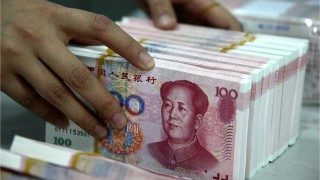
Ideally, to defuse this potential catastrophe, one of the two belligerents should be removed from the regional equation. Since China is located in Asia, its removal is out of the question, thus, through the process of elimination, that means America should and must be the party who withdraws.
Since it won’t, it will take concerted and incremental effort from all Asian states to gradually reduce America’s presence and influence in the region to rational and constructive proportions.
This must be done while resisting the temptation to cynically exploit US meddling in the region to enhance one nation’s position against its neighbour, only to be targeted next once the region is collectively weakened through continued conflict.
For Asia to grow, it requires stability. The US promises only instability and confrontation for the next decade, and is even openly preparing for a war it admits will devastate the region. It is a war that will only be fought because the US refuses to withdraw from a region it has no legitimate claim to in the first place.
The choice for Asia, should it wish to move forward in peace and prosperity is clear. Through unity, the region can remove the real danger to their collective security and stability, a danger that would extort the region through threat of war in order to be allowed to remain.
Joseph Thomas is chief editor of Thailand-based geopolitical journal, The New Atlas and contributor to the online magazine “New Eastern Outlook”.
____________

Jim W. Dean is VT Editor Emeritus. He was an active editor on VT from 2010-2022. He was involved in operations, development, and writing, plus an active schedule of TV and radio interviews. He now writes and posts periodically for VT.
ATTENTION READERS
We See The World From All Sides and Want YOU To Be Fully InformedIn fact, intentional disinformation is a disgraceful scourge in media today. So to assuage any possible errant incorrect information posted herein, we strongly encourage you to seek corroboration from other non-VT sources before forming an educated opinion.
About VT - Policies & Disclosures - Comment Policy




Comments are closed.